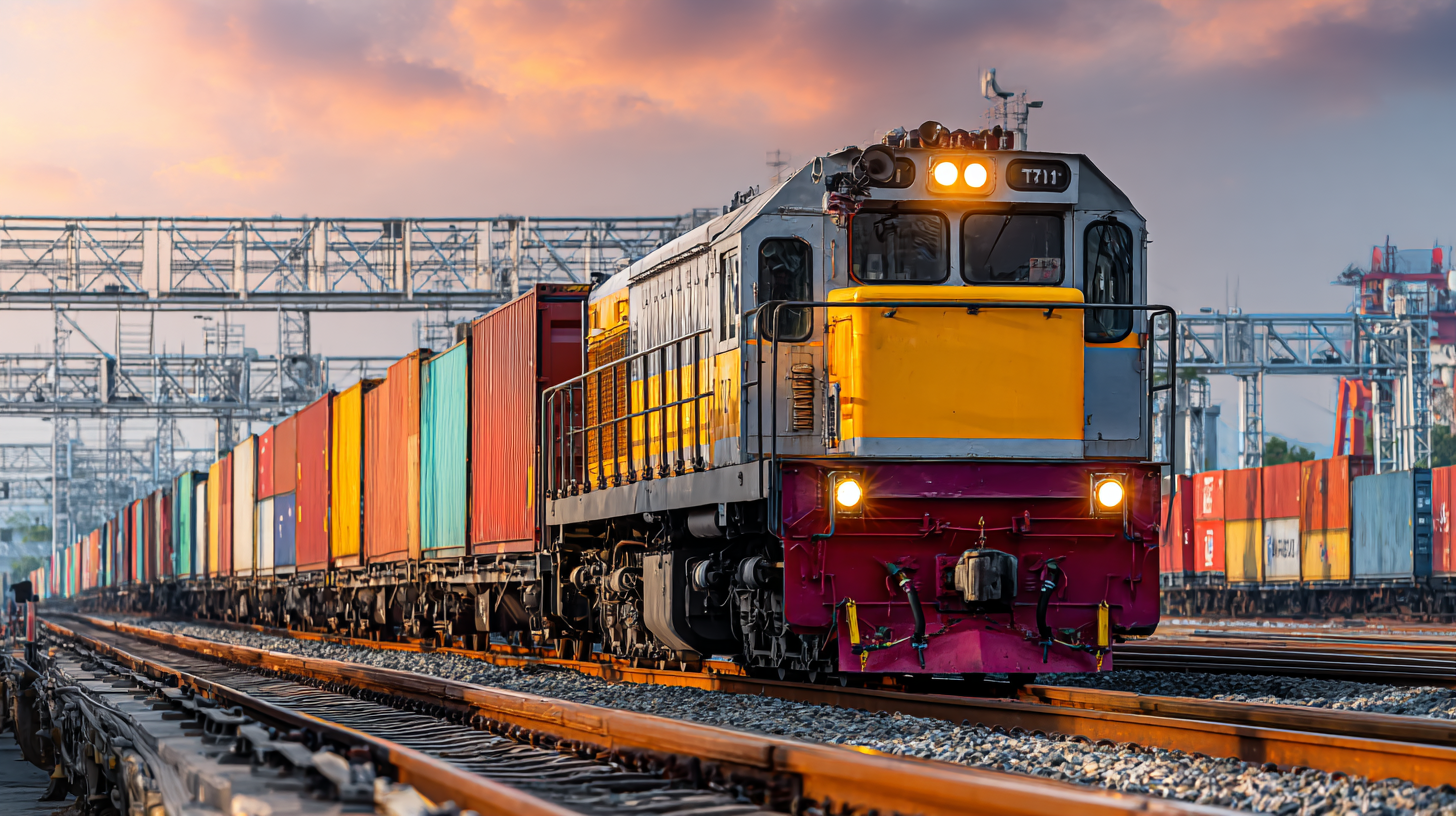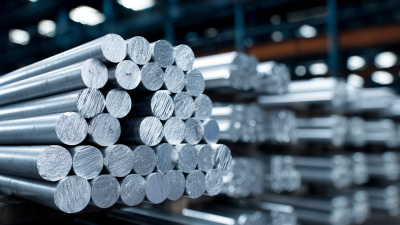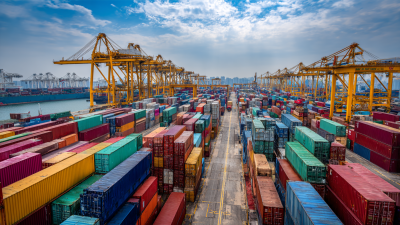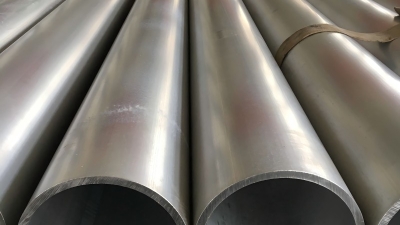T6526 Ultimate Guide to Transforming Your Supply Chain Efficiency
Table of Contents
- Understanding Supply Chain Efficiency Challenges
- Key Technologies Revolutionizing Supply Chain Management
- Strategies for Streamlining Processes and Reducing Costs
- Measuring and Analyzing Supply Chain Performance Metrics
- Best Practices for Collaborating with Suppliers and Partners
- Innovative Solutions for Sustainable Supply Chain Practices
- Exploring the Benefits of 6061 T6 Aluminum Alloy Tubes in Bicycle Frame Design: Insights from Recent Industry Reports
- FAQS
- Related Posts
In today’s fast-changing world of supply chain management, companies like Shanghai Miandi Metal Group Co., Ltd. are really focused on boosting efficiency and improving how they operate. They’re a well-established distributor of aluminum products—everything from 1000 to 8000 series, including plates, rods, and tubes—that serve industries like aviation, aerospace, and shipbuilding. Recent industry reports suggest that by making supply chains more efficient, companies could cut operational costs by up to 15% and also speed up their turnaround times. There’s this framework called T652-6, which many manufacturers find helpful for streamlining processes and reducing waste. (Honestly, adopting such comprehensive strategies isn’t just about staying competitive; it’s also about aligning with the industry’s push towards sustainability. In other words, these efforts help organizations stay resilient even when market demands are always changing.)

Understanding Supply Chain Efficiency Challenges
Getting a solid grip on the challenges around supply chain efficiency is super important for businesses that want to boost their operational game. I came across a report from McKinsey – and it’s pretty eye-opening – it suggests that companies could be losing up to 30% of their potential revenue just because of supply chain hiccups. That really highlights why it’s so crucial for organizations to pinpoint and tackle bottlenecks in their supply chains. Common issues include poor inventory management, not having a clear view across all parts of the supply chain, and delays in shipping, all of which jacks up costs and leaves customers less happy.

On top of that, the Gartner Supply Chain Top 25 report points out that about 70% of supply chain leaders think disruptions are here to stay for a while. Things like changing market demands, geopolitical tensions, and worldwide pandemics just make everything trickier. To stay ahead, businesses really need to tap into new tech—think AI and data analytics—to get better at predicting and reacting quickly. By investing in these tools, companies can build supply chains that are not just resilient but flexible enough to roll with whatever the market throws at them and keep customers satisfied.
Key Technologies Revolutionizing Supply Chain Management
Hey, with how fast the market’s changing these days, it’s pretty clear that some serious tech is shaking things up in supply chain management. I read this recent report from Gartner, and it said that companies jumping on board with AI and IoT in their supply chains can see operational improvements of up to 30%. That’s huge! Using AI-powered analytics helps businesses make smarter, data-backed decisions—especially when it comes to forecasting demand. Basically, it means less money wasted on excess stock and fewer stockouts, which everyone hates.
And get this—adding IoT devices into the mix lets companies track and monitor their goods in real time, no matter where they are. McKinsey’s study even found that companies using IoT tech saw about a 20% boost in logistics performance. Thanks to IoT sensors, businesses can spot problems in the supply chain early and make things run smoother overall. It's all about being more reactive and flexible to what the market needs. Combining these technologies doesn’t just speed things up—it helps build a supply chain that's tough and ready to roll with whatever consumers throw at it or global shifts that come our way.
Strategies for Streamlining Processes and Reducing Costs
In today’s really competitive market, finding ways to make supply chains more efficient is pretty much essential for companies trying to cut costs and simplify their processes. I read a report by McKinsey & Company that says businesses could cut their costs by as much as 30% just by optimizing how their supply chains work. That really highlights how important it is to have strong supply chain strategies — they can make a big difference in boosting profits and making operations run smoother.
One smart move is to use technology to automate inventory management. According to Gartner, companies that are rolling out advanced analytics and AI in their supply chains are seeing anywhere from 10% to 20% drops in operational costs. Switching to integrated software solutions can give real-time insights, helping companies react faster to market changes and avoid holding onto excess stock.
**Pro tip:** Think about using cloud-based platforms to improve collaboration with your suppliers. Good communication can really cut down on delays and keep things running smoothly. Also, it’s a good idea to regularly check out supplier performance metrics — that way, you can spot areas that need improvement and negotiate better deals, which adds up to cost savings. By focusing on these strategies, businesses can set themselves up for steady growth and better efficiency when it comes to their supply chain operations.
Measuring and Analyzing Supply Chain Performance Metrics
In today’s super competitive world, keeping track of supply chain performance isn’t just important – it’s pretty essential if you want to stay ahead. I came across a report from the Gartner Supply Chain Symposium, and guess what? About 75% of businesses actually believe that monitoring key performance metrics is crucial for boosting overall efficiency. When companies really get the hang of these metrics, they can slash operational costs and end up making their customers much happier. Things like Order Accuracy, Inventory Turnover, and Lead Time aren’t just buzzwords—they’re the bread and butter for figuring out how healthy your supply chain really is.
**Tip:** Make it a habit to regularly check in on your KPIs. Think of it like a health check-up for your business. For example, focusing on Inventory Turnover can give you some pretty eye-opening insights into purchasing patterns, which can help you keep stock in check and save on holding costs.
And here’s the fun part—advanced analytics tools can dig even deeper. They can help you predict demand better and catch any bottlenecks before they become big problems. A recent McKinsey report mentioned that companies making decisions based on solid data tend to see a 20-25% bump in productivity. Honestly, embracing new tech and data-driven approaches can really give your business a leg up against the competition.
**Tip:** If you invest in a good analytics platform that plays nicely with your existing systems, you’ll get real-time insights. That means you can make smarter decisions on the fly and tweak your operations quickly when needed.
T6526 Ultimate Guide to Transforming Your Supply Chain Efficiency - Measuring and Analyzing Supply Chain Performance Metrics
| Metric | Value | Target | Status |
|---|---|---|---|
| Order Fulfillment Cycle Time | 3 days | 2 days | Above Target |
| Inventory Turnover | 5 times/year | 8 times/year | Below Target |
| Perfect Order Rate | 92% | 95% | Below Target |
| Supply Chain Costs as Percentage of Sales | 12% | 10% | Above Target |
| On-Time Delivery Rate | 88% | 90% | Below Target |
Best Practices for Collaborating with Suppliers and Partners
Getting suppliers and partners on the same page really makes a huge difference when it comes to smoothing out the supply chain. To build those solid relationships, it helps a lot to keep the lines of communication open and honest. Regular check-ins and updates can go a long way in making sure everyone’s on the same wavelength about what’s needed and expected. Sharing forecasts and inventory info also allows suppliers to better guess what’s coming so they can cut down on lead times and avoid running out of stock.
On top of that, using the latest tech can be a game-changer. Supply chain management software makes it super easy to share info quickly and get real-time updates, which is a huge help. Plus, partners can swap insights and share tips for improvement, making the whole chain better for everyone. Companies that put resources into these collaborative tools usually find they’re faster and more flexible. They can react quickly to changes in the market or customer needs without breaking a sweat.
And don’t forget—the secret sauce is really about building a partnership culture. When you involve suppliers in big decisions and actually listen to what they have to say, trust and loyalty grow. Recognizing their role as a key part of your success makes the whole supply chain more resilient and responsive. In the end, it all adds up to smoother operations, better performance, and a more reliable supply chain.

Innovative Solutions for Sustainable Supply Chain Practices
As more and more businesses start to realize just how important sustainable practices are, we’re actually seeing some pretty cool innovations that are changing the way supply chains operate—making them more eco-friendly and efficient. Things like IoT and AI aren’t just buzzwords; they’re really helping companies gather real-time data, which means smarter inventory management and better demand forecasting. Honestly, these tech updates make a big difference—they help cut down waste and lessen the environmental impact of transportation and storage. It’s like moving toward a way of doing business that’s better for the planet.
And here’s another thing: jumping on the circular economy bandwagon can seriously boost sustainability. That means designing processes where recycling, reusing materials, and cutting back on raw resource use are the norm. Plus, working with suppliers who genuinely care about the environment helps build a stronger, more resilient supply chain overall. It’s not just about meeting the rising consumer demand for ethical products—though that’s definitely part of it—it’s also about positioning your company as a leader in the push toward a greener, more sustainable future.
Exploring the Benefits of 6061 T6 Aluminum Alloy Tubes in Bicycle Frame Design: Insights from Recent Industry Reports
The use of 6061 T6 aluminum alloy tubes in bicycle frame design provides a compelling combination of strength, weight savings, and versatility. This alloy, known for its excellent mechanical properties, has become a popular choice among bike manufacturers looking to enhance performance while maintaining structural integrity. The T6 temper of this alloy ensures that it possesses exceptional resistance to deformation under stress, making it ideal for high-performance cycling applications.
Recent industry reports highlight that tubes ranging from 15mm to 160mm in diameter made from 6061 T6 aluminum not only offer superior tensile strength but are also relatively lightweight compared to other materials. This aspect allows for greater agility during rides and the ability to tackle varying terrains without compromising the robustness of the bike. Moreover, the malleability of the 6061 alloy lends itself well to intricate designs, enabling engineers to create aerodynamically efficient frames that can accommodate different riding styles and preferences.
Incorporating 6061 T6 aluminum tubes into bicycle frame design addresses the ongoing demand for high-performance bicycles while catering to the diverse needs of cyclists. As manufacturers continue to innovate within this space, the benefits of using this alloy are clear, marking a significant step forward in the evolution of modern cycling technology.
FAQS
: Key technologies include artificial intelligence (AI) and the Internet of Things (IoT), which help organizations achieve operational efficiencies and enhance demand forecasting accuracy.
Companies can achieve a cost reduction of up to 30% by optimizing supply chain operations, leveraging technology for automation, and implementing advanced analytics.
IoT allows real-time tracking and monitoring of goods, resulting in a 20% improvement in logistics performance and better insights into supply chain disruptions.
Advanced analytics and AI can automate inventory management, leading to a 10-20% reduction in operational costs and providing real-time visibility.
Best practices include clear communication, regular check-ins, sharing forecasts and inventory data, and leveraging supply chain management software for seamless information exchange.
A culture of partnership fosters trust and loyalty, encourages suppliers' input in strategic decisions, and contributes to creating a more resilient and responsive supply chain.
Related Posts
-

Top Strategies for Sourcing Affordable 6061 T6 Aluminum in the Global Market
-

Global Market Analysis 2025 for Best Weldable Aluminum Alloy and How to Choose the Right Supplier
-

Global Excellence in Aluminum Plate Production Proudly Crafted in China
-

Navigating Import and Export Certifications for Best 6061 Aluminum Alloy Products in Global Markets
-

Understanding Import Export Certifications for Best Al 2024-T351 with a Step by Step Guide
-

Discover Superior Manufacturing with Chinas Best T351 Aluminum Solutions
Blog Tags:


